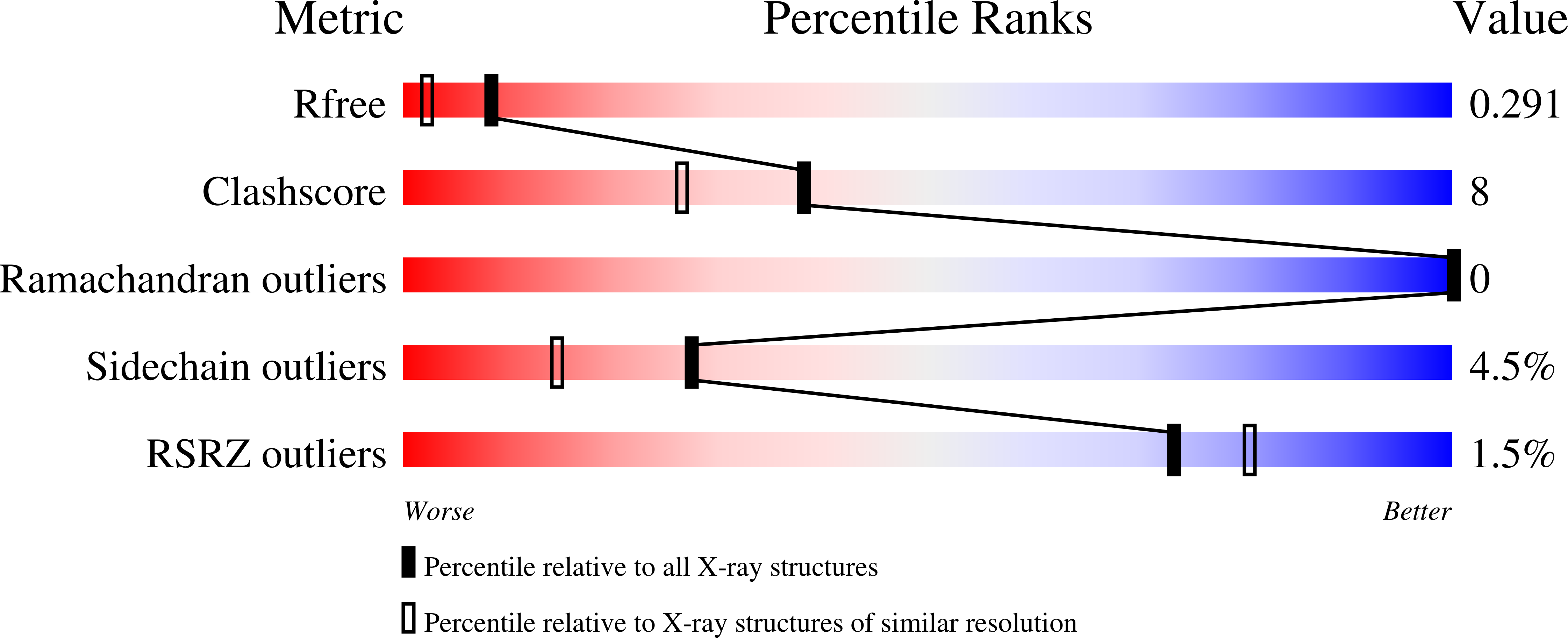Probing the evolution of hydroxyisourate hydrolase into transthyretin through active-site redesign.
Cendron, L., Ramazzina, I., Percudani, R., Rasore, C., Zanotti, G., Berni, R.(2011) J Mol Biol 409: 504-512
- PubMed: 21515285
- DOI: https://doi.org/10.1016/j.jmb.2011.04.022
- Primary Citation of Related Structures:
3IWU, 3IWV, 3Q1E - PubMed Abstract:
5-Hydroxyisourate hydrolase (HIUase) and transthyretin (TTR) are closely related phylogenetically and structurally, while performing quite different functions. The former catalyzes the hydrolysis of 5-hydroxyisourate within the urate degradation pathway, and the latter is a carrier protein involved in the extracellular transport of thyroid hormones and in the cotransport of retinol. The evolution of HIUase into TTR represents a remarkable example of adaptation of a new function by active-site modification of an enzyme. On the basis of phylogenetic reconstructions and structural comparison of HIUase and TTR, two mutations (Y116T and I16A) were likely to be crucial events in order to induce, after a gene duplication event, the conversion of the enzyme into a binding protein. By rational reshaping of the active sites of HIUase and functional analyses of its mutant forms, we have provided insights into how its neofunctionalization could be achieved. We show here that the two mutations at the active sites of HIUase open up the two ends of the channel that transverses the entire tetrameric protein, generating two cavities accessible to the thyroxine molecule and abrogating, at the same time, the enzymatic activity. Our data indicate that a small number of critical mutations affecting the active site of an enzyme may be sufficient to generate a drastically different function, while a large number of additional mutations may be required for the fine-tuning of the structural and functional features of new proteins.
Organizational Affiliation:
Department of Biological Chemistry, University of Padua, Viale Colombo 3, 35121 Padua, Italy.















